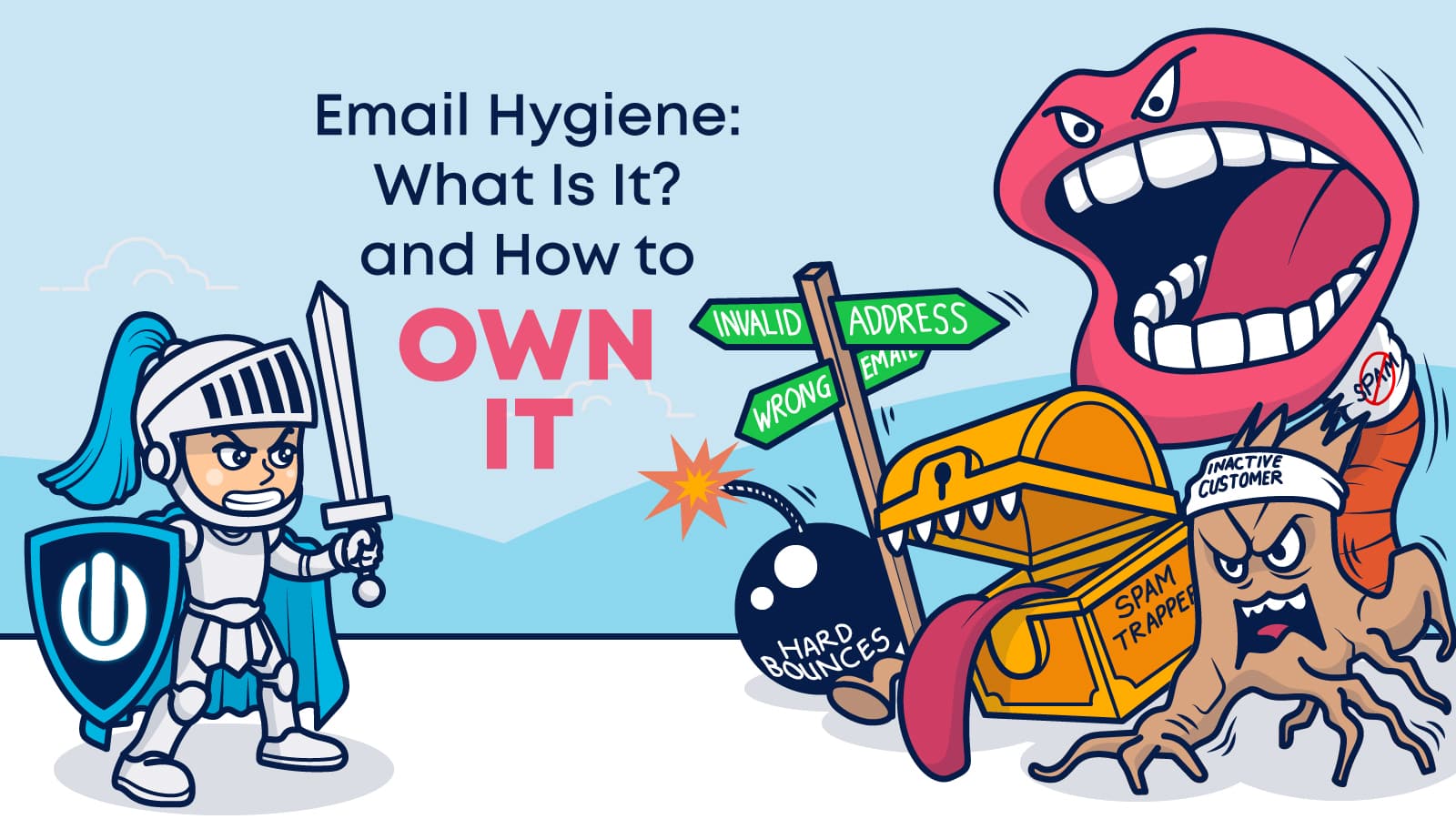Your email hygiene habits are influencing your deliverability and email marketing operation. Without proper email hygiene, your emails are doomed to the spam folder. In this post, we explain everything there is to know about it. Let’s dive in.
It doesn’t matter if you’re avoiding purchased lists or scraped data. If you don’t practice email hygiene regularly, your email operation is toast.
Even for the very best marketers, email list attrition is a thing. It is estimated that as much as 35% of the average list will churn out each year.
If you don’t practice good email list hygiene, these disengaged customers and inactive addresses will hold back your email deliverability and act as a brake on every campaign, like dead weight on a struggling horse.
There’s an old folk song in England about a knight who is riding his horse across the moor. She’s heading to a fair, and She’s in an excellent mood.
Shortly, she passes a man on foot. The man is also going to the fair, so the rider tells him to climb up on the horse behind her. The man does just that, and off they go.
They haven’t gone far before they pass another woman. She is also on her way to the fair. Feeling very generous, they tell that woman to get up on the horse behind them.
This happens a third time, and a fourth, and a fifth. The poor, burdened horse feels the weight and gets slower and slower.
Finally, as yet another man prepares to climb up onto the horse, the animal has had enough. It rears up, shakes off all of them, and gallops away over the moor’s muddy waters.
Nobody gets to the fair, and the original rider has lost her horse.
An email list that’s overburdened with inactive addresses will become a lot like this poor horse.
Deliverability will slow as engagement falls. Your email marketing operation will start to stumble rather than race into the inbox as it should, and eventually even stop.
You might think that your customer retention approach has something to do with it, but without the right email hygiene practices in place, the blame might be misplaced.
Don’t get me wrong. It is important, and there are often great ways to re-engage customers and keep them engaged.
However, some customers simply cannot be re-engaged. These customers and addresses can seriously damage your email marketing operation.
In addition to this, fake addresses, inactive addresses, and mistyped addresses can all add a serious burden to your email lists. If you don’t free your email list from them, they will quickly weigh down your sender reputation.
This is why it’s important to work just as hard on email hygiene as on customer retention. Keep that horse’s load light, and it will gallop straight into the inbox rather than disappearing into the darkness of the spam folder.
What is email hygiene?

`Email hygiene’ or ‘Email list hygiene’, refers to a number of practices that every email marketer should follow.
Good email hygiene will keep your email list lean, clean, and efficient by making sure that every address in your list is both valid and engaged.
There are many reasons why an email address may become a dead weight that’s holding back your operation:
- Sometimes addresses start like this. For example, someone may have typed their address wrong in your sign-up form.
- Sometimes the email address is just no longer in use.
- And yes, sometimes, people simply lose interest. Perhaps something changed, and your offering no longer has value for them. These customers can sometimes be re-engaged, but these inactive leads are harmful to your deliverability when re-engagement fails.
Email deliverability is perhaps the most important factor in email marketing.
Without deliverability, everything else is pointless. If you’re ignoring inactive email addresses, they’ll become a huge burden on your deliverability and seriously hold your email marketing operation back.
Email list hygiene can fix this problem.
Do you need to clean your email list?
If your horse is already showing signs of distress, urging you to drop a couple of dead weights, do it. Clean your email list. Yes!
You can recognize these signs by looking at certain trends in your email metrics:
- Open rates – this is the primary metric that can warn you of a possible issue with your sender reputation. If you’re experiencing a constant decline of open rates across all ISPs, or even with specific ones, it’s most likely you have a deliverability issue.
- Bounce rates – if you notice a spike specifically in hard bounces, it’s likely your deliverability will decline in the future. When seeing such a spike with, or previous to a decline in open rates, it’s a clear sign of a sender reputation issue.
- Spam/complaint rates – Similarly to bounce rates, they will tell you if you’re about to experience a decline in deliverability or already did.
However, even if all your metrics are looking great, it’s worth to employ email hygiene practices for the following reasons:
- It will keep your sender reputation and deliverability high. If you’re not practicing email list hygiene, both will eventually decline as recipients become inactive.
- It can drastically improve your sender reputation and deliverability. You’d be surprised at the difference unburdening your list of certain addresses can make! You might think you have good deliverability now, but with a clean list, it gets even better.
How often should you clean email lists?
There’s no set in stone rule for email list cleaning frequency.
Some marketers say every three months. Others say six. Some high volume email senders clean their list every week!
Our advice is to take an `ongoing’ approach when it comes to your email hygiene. It needs to happen continuously, behind the scenes, and not every ’X’ period.
Most email hygiene practices are easy, inexpensive to implement, and don’t take much time. As they’re light on resources and provide immense value, there’s no reason to wait!
Why is email cleansing important?
The simple answer to this question is ‘deliverability’. It’s vital, and it has a direct impact on your revenue.
There are several ways in which poor email hygiene can negatively affect your deliverability, and when this happens, it directly impacts your revenue:
Email hygiene decreases spam complaints
It’s a terrible idea to keep sending to inactive recipients.
If people don’t want to hear from you, they will be frustrated to keep finding your emails in their inbox. So frustrated that they may well send in spam complaints.
Spam complaints are a quick way to tell ISPs that you’re not a reputable sender. Once enough subscribers will report your emails as spam, ISPs will flag your emails and divert them to the spam folder.
To avoid spam traps
Some inactive addresses aren’t customers who’ve lost interest in your content. They are entirely inactive, and their mailboxes no longer exist. ISPs often turn inactive mailboxes into ‘recycled spam traps’ to filter out less legitimate email senders.
If you send to a recycled spam trap, it tells the ISP that you are sending indiscriminately, and they will lower your sender reputation accordingly.
The other kind of spam trap is a ‘pristine spam trap’ or ‘honeypot’.
These are created as spam traps by the ISPs to catch out senders who obtain addresses unethically.
Bought and scrapped lists are often full of pristine spam traps.
Hit enough spam traps, and you’ll quickly find yourself with a terrible sender reputation and/or on a blacklist. Both are bad news for your deliverability.

Dodge a hit to your engagement rates
Subscribers that are not interested in your offering might not report you as spam or unsubscribe. But their lack of engagement can hurt your email operation.
ISPs use data like open and click rates to determine your sender reputation. As these metrics fall, it sends a negative signal to the ISP.
Persistent low engagement rates can and will encourage ISPs to consign your emails to the spam folder.
Stave off the hard bounce increase
If you have fake or mistyped addresses in your list, your hard bounce rate will rise. Hard bounces occur when an email cannot reach a recipient address because the address simply does not exist.
Hard bounces reflect poorly on your sender reputation, and as they accumulate, your deliverability suffers.
It’s not all negative though
Good email list hygiene doesn’t just prevent bad things from happening. It also brings good things your way.
Reducing costs and improving ROI
By avoiding all of the above with the soon-to-follow best practices, you’re improving your engagement rates.
This, as noted, will signal ISPs your emails belong in the inbox, which can help you to save money in large volumes.
When you’re sending millions of emails, the costs rack up quickly. With proper email hygiene, you’ll ensure that every email you send is directed to:
- Engaged recipients.
- Active email addresses.
Making it more likely to generate revenue and reduce sending costs.
All in all, good email list hygiene is excellent for your ROI.
How do you scrub an email list?
There are various list hygiene procedures you can use to keep your email list lean and clean:
Remove inactive subscribers
This is sometimes referred to as a ‘sunset policy’.
The obvious way to make sure that the horse and its rider got to the fair was for all the extra people to dismount. Similarly, one of the simplest and easiest ways to eliminate the problems associated with inactive subscribers is to exclude them from your ongoing campaigns.
We recommend doing this by setting up an exclusion/suppression segment based on behavioral segmentation.
For example, you can set up a segment for subscribers who have received your emails but didn’t open even one in a certain timeframe.
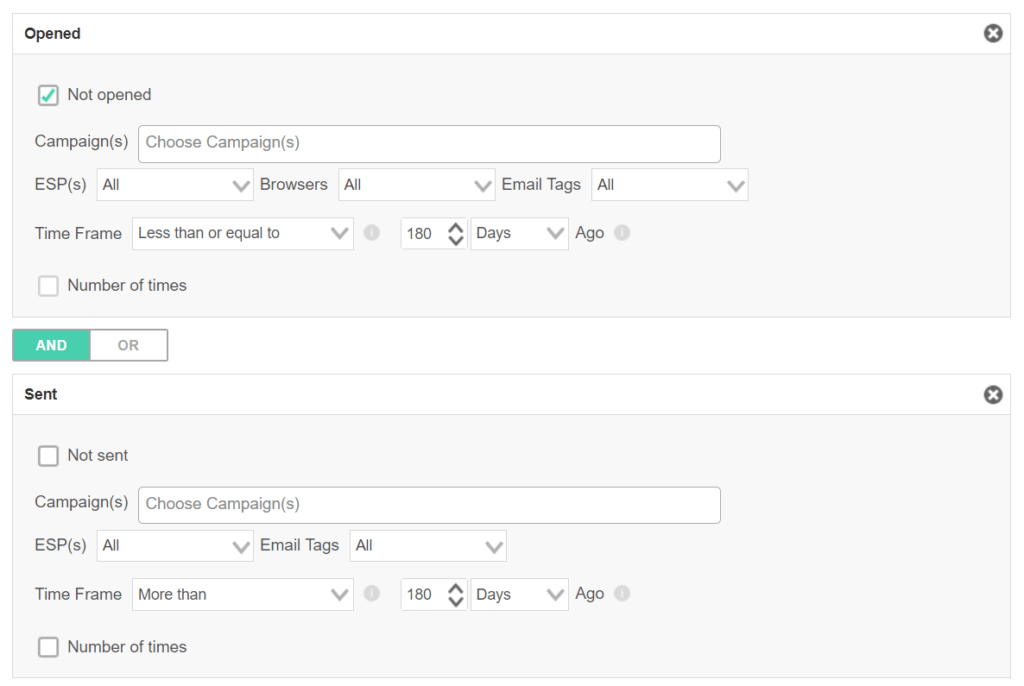
In Ongage, this timeframe is entirely up to you and can be easily changed from 1 day to 24 months. The decision should be based upon your sending frequency and the effects of the exclusion segment on your metrics.
The best thing about a behavior-based segment like this is that it’s automatically updated all the time.
Once you’ve set up your segment (which takes less than a minute to do), you’ll have cleared a huge amount of your list hygiene issues in one fell swoop.
Use third party email validation services
You may find these services referred to as either ‘verification’ or ‘validation’ services. Sometimes, these terms are used interchangeably, but there is a minor distinction that’s worth noting.
‘Validation’ refers to checking that an email address exists, while a ‘Verification’ service usually also checks that the address is active.
Validation/verification services will go over your list and mark suspicious email addresses that might be spam traps or invalid.
You can then easily create a suppression list from these email addresses and keep your sender reputation pristine.
Validation/verification services differ, but the reports they generate tend to read quite similarly, with the following criteria:
- Valid – the email passed all checks and is generally safe to send to. You might still experience a minimal bounce rate.
- Invalid – the email is 99.9% invalid due to various possible reasons. You should never send to this email address.
- Accept all – also known as a catch-all, these are email addresses where the server is set to receive them but might bounce later on due to a firewall or a certain policy. You should expect bounces there, and if you do decide to send, do so slowly with monitoring.
- Unknown – these emails weren’t possible to validate, mainly because the mail server was down. It might be a temporary or permanent issue, and if you decide to send to this group, tread carefully.
Here are some of the best known and most reputable verification/validation services:
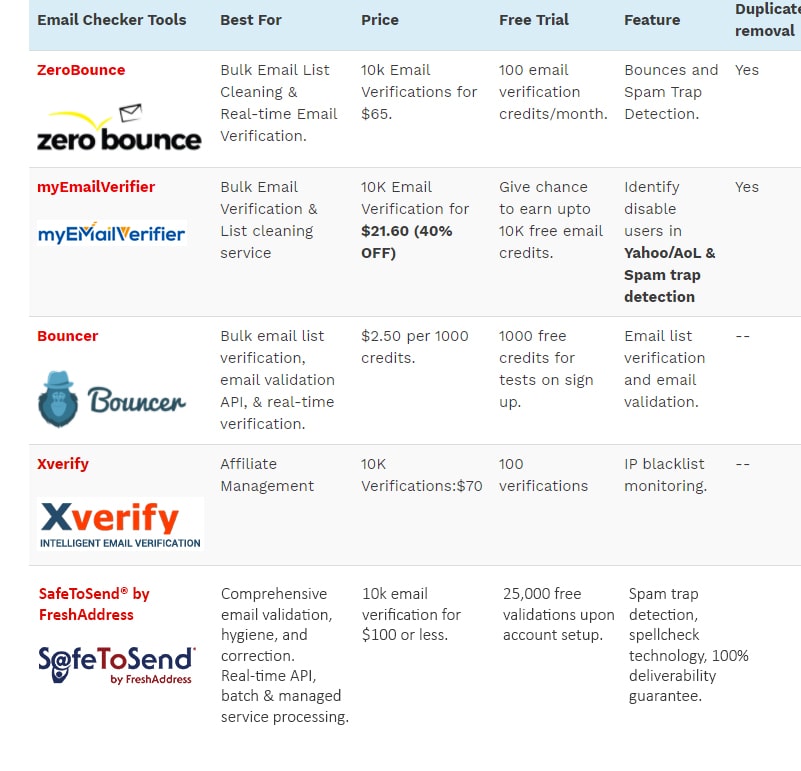
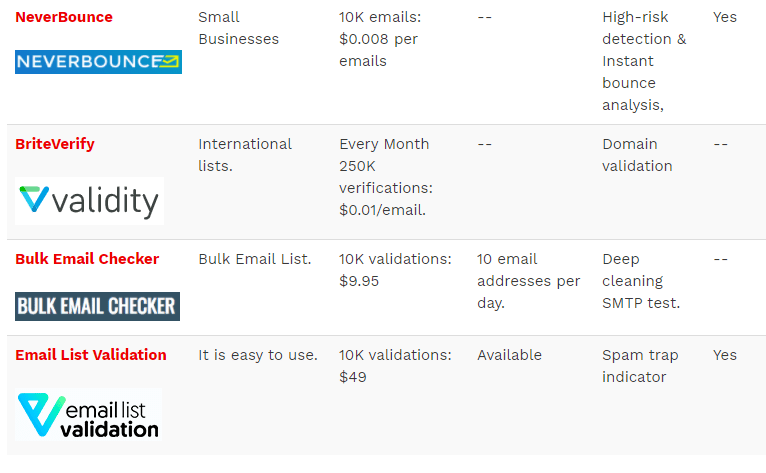
Many of these services offer more than validate lists of emails in bulk. They can also carry out real-time validation, which I’ll cover later on.
Remove repetitive soft bounces
‘Soft’ bounces occur when your email temporarily cannot get through to the mailbox. They happen for several reasons, including the mailbox being full, the server being down, and so on.
Soft bounces don’t generally pose a threat to your deliverability, but they might transform into a hard bounce if they happen a few times from the same address. Hard bounces are a lot more worrying.
Our platform automatically suppresses hard bounces but, as soft bounces are usually temporary, it does not do the same for soft bounces.
As such, we recommend setting up an exclusion/suppression segment for repeated soft bounces in much the same way that you would for inactive recipients.
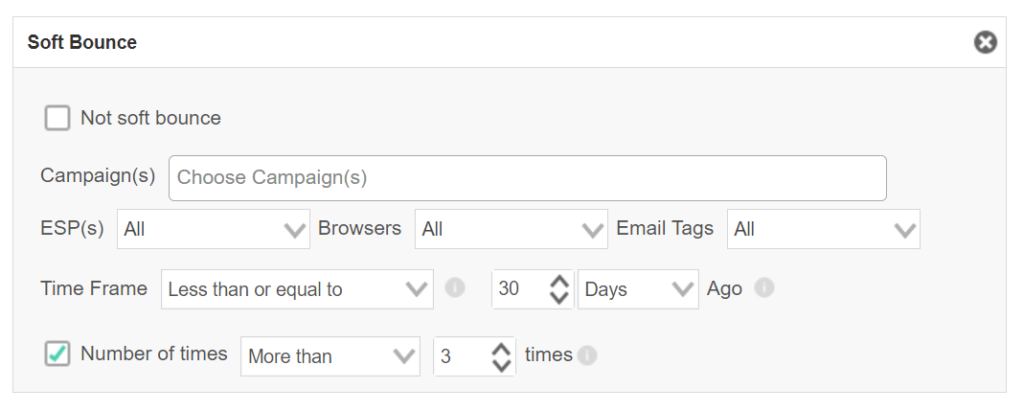
Help your customers to unsubscribe
If all those extra people on that poor horse had realized that things were not going as they wished and dismounted on their own accord, the folk song would have had a much happier ending.
In email marketing, however, sometimes the ‘dismount’ option is not always obvious.
Unsubscribing is a convenient way for disengaged customers to remove themselves before becoming a dead weight on your email marketing operation.
Giving customers a straightforward way to unsubscribe helps your list to clean itself. In addition, it gives people a way of getting rid of unwanted content that doesn’t involve hitting the ‘spam’ button.
Your reputation as a business depends on your ability to provide an easy way out of your email list via the unsubscribe option. It will:
- Save you time by speeding up your email hygiene routine as disengaged customers remove themselves.
- Reduce the number of spam complaints you receive.
There are several ways to help customers to unsubscribe. Start with:
Providing a clear unsubscribe link, button, or section
In this example from Amazon, there are two unsubscribe links – one in the header and another in the footer. They’re easy to find, but they don’t overwhelm the rest of the content.
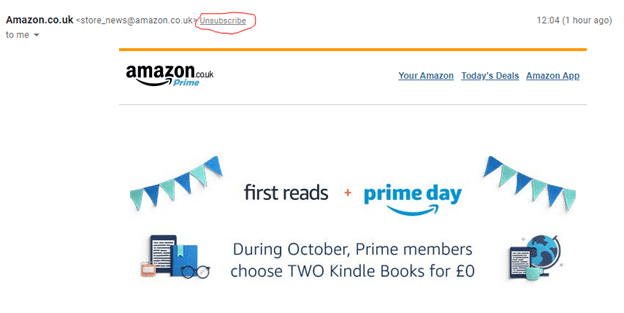

The first unsubscribe link is called “list-header unsubscribe”, and it is located there by default, so your customer will easily find it.
Implementing this should be done via your ESP/SMTP, but when using Ongage, it is automatically added to your SMTP relay of choice.
Offer a preference center
Installing a preference center gives customers control over the content they receive from you.
In many cases, customers don’t necessarily want to stop hearing from you – they just want to:
- Hear from you less.
- At different times.
- Or to receive content that is more relevant to them.
Giving them a preference center allows them to tell you what (and how) they want to hear from you. A good, well-organized, and well-used preference center can even increase your engagement rates because it ensures that customers are getting the content they want, at times that are convenient for them.
Since our folk tale hails from ancient Anglia, we’ll provide some great examples from UK brands.
Waterstones has a great example of a preference center.
When clicking through to the preference center, the first thing that customers see is clear information about what Waterstones offer in their email content and how customers can tailor this through the preference center.
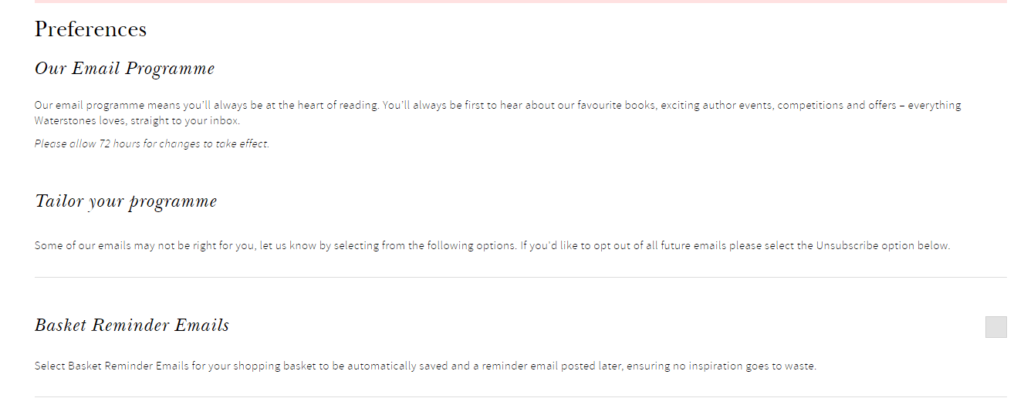
In the next step, customers are given several options to choose from, from general tailoring of message frequency to the kind of content they want to receive.
In the end, they are given the option to either ‘unsubscribe’ or ‘take a break’. The latter option is useful for people who don’t want to unsubscribe but also don’t want to hear from you right away.

Perhaps they’re going on a vacation or experiencing some other life event for which your emails are irrelevant.
Try a re-engage/unsubscribe email
If you have a group of customers who are getting progressively more disengaged but which you think can be re-engaged, give them a choice.
In this email from Free People, disengaged customers are given the option of staying on the list or removing themselves. This can help to divide useful leads from less engaged leads in your low-engagement segments.
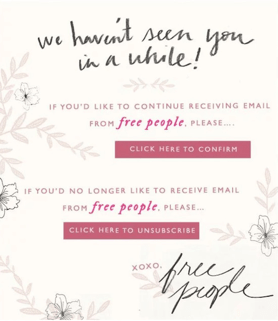
When sending out such a campaign, be sure to use a different IP to minimize the effect of low engagement rates on your other IPs.
How can you keep your email list clean when new leads join?

Not letting the horse get overburdened in the first place would have been a great way to solve our folk song heroes’ problems. In the same way, you can give yourself the best chance of keeping a clean list by using good practices when onboarding new leads.
Here’s how:
Use real-time email validation
With real-time validation, the service automatically checks that an email address is valid as the new subscriber is typing it out. This prevents invalid addresses from entering your list in the first place.
Real-time email validation occurs with minimal disruption to the customer. It happens in the background while new subscribers fill in their details.
First, the new subscriber fills in their email address. The validation service then checks that the address is in the correct format. If it checks out, it checks that there’s a valid server attached. It then pings the email domain to check that it exists and that it is accepting mail. If the address fails any of these steps, the validation service won’t let it onto your list.
These services are wonderful for lightening the load your list is already carrying and preventing more ‘dead weight’ from climbing aboard. However, they can’t guarantee a 100% clean list, so follow all the practices we’re suggesting here.
Employ hidden form fields
A great way to filter out bots and not interrupt the flow of your sign-up process is by using hidden fields.
Such fields aren’t visible to the regular subscriber but will get filled by a spambot that’s doing the rounds in the grassy lands.
When importing email addresses to your CRM or email marketing platform, it’s easy to see which addresses are invalid by looking at the hidden fields.
If they contain data of any sort, you’d be better off deleting them.
Implement double opt-in
Double opt-in is like email validation, but it relies upon engagement from the person as well as from the server and domain.
Double opt-in processes require people to actively confirm their subscription by first signing up via your form and then verifying that they do indeed exist and want to receive your emails.
The process works via a confirmation link emailed to the new subscriber’s address, which they must click on for their address to end up on your list. This example from Euronews is typical of a double opt-in confirmation email:
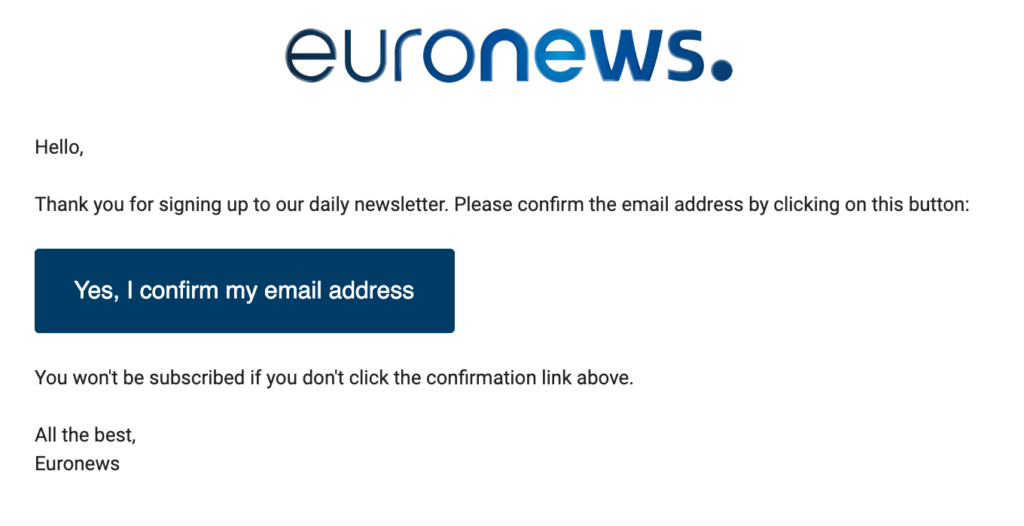
Not only does double opt-in confirm that there genuinely is someone behind the screen, but it also commits them to the process.
Why? Because double opt-in is a qualification process.
The subscribers you gain through double opt-in are likely to be more engaged and committed from the get-go than subscribers who don’t take that extra step.
Never, ever buy or scrape lists
Growing your list can be hard work, but it’s worth putting in the elbow grease to do it properly.
Buying in lists from a third party or scraping data from web pages may seem like a quick and easy way to gain an audience, but it’s a terrible idea in the long run.
Bought and scraped lists is like piling bags full of rocks on top of your horse, along with all the extra people. Bought/scraped list bring a huge amount of risks with them, including (but not limited to):
They’re often illegal
Legislation like the GDPR in the UK and Europe, the CCPA in California, and PIPEDA in Canada enforce explicit data consent.
This means that if customers do not actively and transparently agree to give you their data, you cannot have it.
Bought and scraped data is taken without customer consent. If you are found to be using data obtained without permission, you can be subject to huge fines and sanctions under these legislations. For example, a GDPR breach can result in fines of up to €20 million, or 4% of annual turnover (whichever is higher).
Don’t think that you can slip under the legislative radar, either. Consumers in these areas are very savvy. They can and do report companies that message them without their consent, and court judgments almost always fall on the consumer’s side.
They’re full of spam traps
We mentioned pristine spam traps above. ISPs plant them all over databases for the express purpose of catching out marketers who use bought lists.
If you buy or scrape lists, you will almost certainly end up triggering pristine spam traps, and that will be a huge blow to your deliverability.
They’ll lower your engagement metrics
Bought/scraped lists are full of addresses which have never heard from you before. Even if you purchased a list, and you’re planning to use it as a lookalike audience, you will still be messaging them out of the blue.
They didn’t opt-in to receive your emails.
People who didn’t ask to get your emails are less likely to engage with them. At best, this will damage your engagement metrics, which will lower your sender reputation and deliverability.
Worse, it is highly likely to raise your spam/complaint rate.
Grow your list organically
The old school way is the only school here.
This means:
- Growing your list by demonstrating your value to consumers.
- Making them want to sign up for your communications.
- Engaging them with your emails.
Here are our top tips for growing your list organically:
Offer high-quality content
Publishing high-quality, relevant, and engaging content is fantastic for brand building, authority, awareness, and even your SEO, which is, in turn, excellent for bringing in leads.
Produce blogs, webinars, whitepapers, and so on that talk about the kinds of things your audience wants to hear about – and talk about them in a way that they’ll enjoy.
Of course, creating this content is just the first step. You then have to get it in front of an audience. Promote your content wherever works best for you. Social media is usually a good call. You can also promote content via paid campaigns, but if you can build links into any guest content you write, start with that!
Once you have great content, people would be naturally interested in hearing more, subscribing to your newsletter.
Which brings us to our next point.
Include subscription links everywhere
You’ve made some great content, and your audiences are craving for more. They want to sign up for your newsletter and your email marketing campaigns – but there’s no subscription link!
Attention spans being what they are, they shrug and move on.
You need to capitalize on that enthusiasm by capturing your leads at the right moment. Include prominent subscription links/buttons/forms on visible website real estate.
Here’s how we do it. The email subscription form is right at the top of our blog. It’s very clear and easy to find, but its placement in the margin means that it doesn’t interrupt the reader’s experience on the blog.
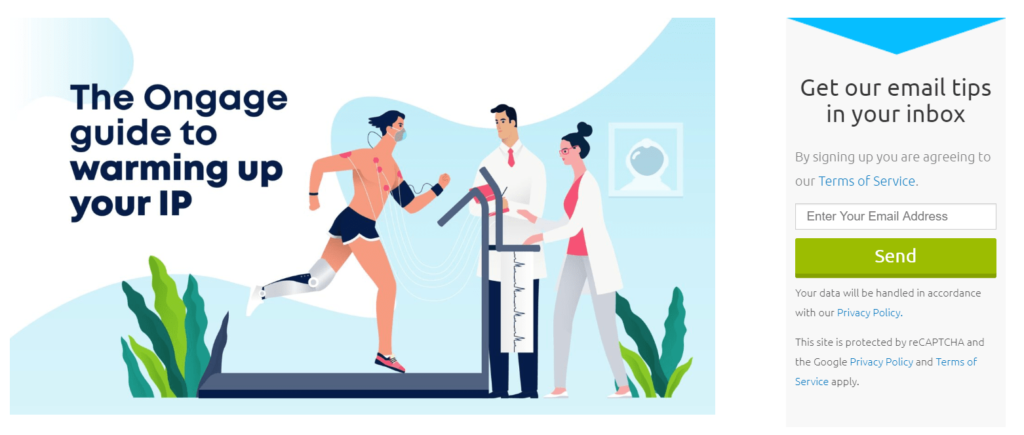
You can also employ pop-ups to grab the reader’s attention. Just make sure they’re not too intrusive and that they can be easily dismissed. You don’t want to annoy your readers. They’re here to read. Everything else is a bonus.
Pop-ups can be implemented in a couple of ways:
- Exit intent – this pop-up will become visible once the reader is about to leave the page. It can be an excellent opportunity to collect new leads, but it can also be annoying.
- Tread carefully and make sure it’s worth their while by offering something of value. Even if they ignore it, they’ll remember that you tried to provide them with something.
- While scrolling – give readers the chance to register when they’re already invested in your content. The message can pop up on the side or in a similar fashion to the exit-intent one as soon as the reader passes a predefined section.
Add a subscription option to your contact forms
Any point of contact with customers is an opportunity to grow your email list. By adding subscription links to contact forms and email signatures, you can strike while the iron is hot and get subscriptions while customers are engaged.
Here’s a simple example from Ibuenda. Sometimes it’s all it takes:
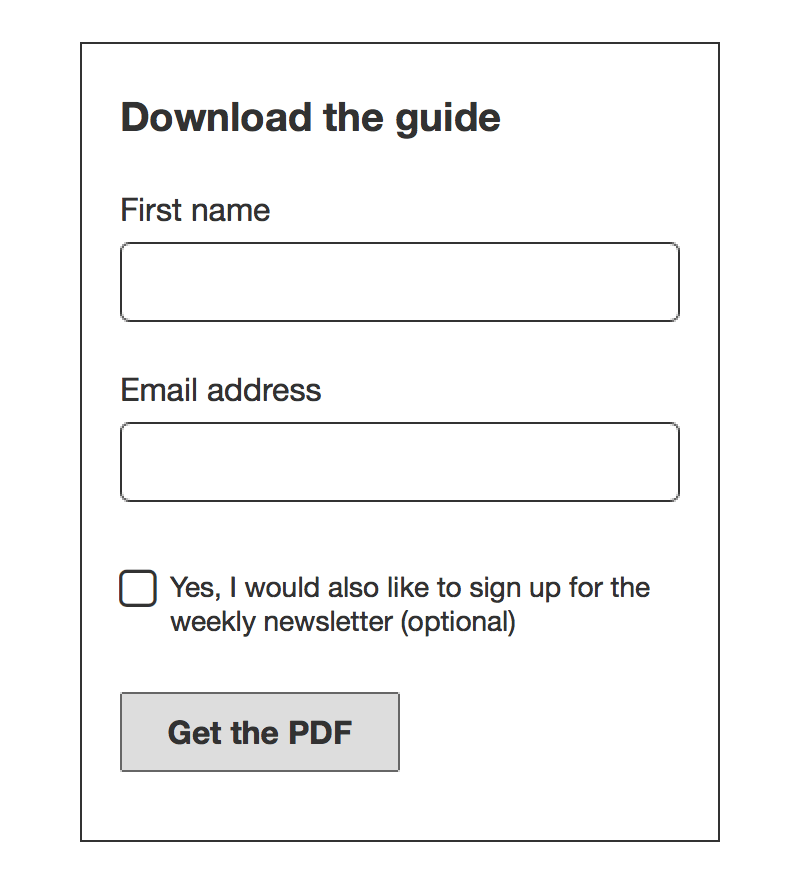
Customers downloading their latest whitepaper are given the option to also subscribe to their newsletter via a simple checkbox.
Remember – it is very important that customers actively consent to be included in your list. Resist the temptation of automatically checking the subscription box. It’s not very `GDPRish’ or user friendly.
For peak deliverability and a fantastic sender reputation, you want to ensure that everyone who gets onto your list fully intends to be there and is engaged from the get-go.
What should you do if you’ve been affected by bad practices?
If you came across the moor with a lot of unnecessary weight, your horse is likely pretty slow and tired by now.
Don’t worry – it’s not too late to show that poor horse some love and fix the situation.
First of all, start doing everything we’ve suggested in this blog. Giving your list a thorough cleaning will begin to make a difference pretty quickly.
To speed things up, check where you stand in terms of your sender reputation and if you are on any blacklists.
Google Postmaster and Microsoft SNDS can help reveal your sender reputation with Gmail and Microsoft related accounts.
For other ISPs, examine your analytics per ISP. If your open rates are meager either across the board or with a specific ISP, that’s usually a sign that your sender reputation is low and/or you’re on a blacklist.
Tools like MXtoolbox can tell you whether or not you’re on a blacklist. Search it for your IP or domain. If you discover that you are on a blacklist, you will need to ask the list owner to remove you.
If your sender reputation is low, you will need to rebuild it. You can do this by:
- Following all the tips we’ve detailed above.
- Segmenting and personalizing your emails. This will help to ensure that they are relevant and valuable for your audiences, which will, in turn, improve engagement rates and, ultimately, your sender reputation.
- Warm-up your IP as you would with a new domain. This involves leveraging your most engaged recipients and slowly ramping up email operations until your sender reputation has recoverede.
Email Hygiene gets you back on the saddle

Boy, our little knight learned a lot.
Fighting her way through the moor with heavyweight, traps, and what not, she had to keep to the true path and drop dead weight at every turn!
Whether you are just starting or have been riding the email marketing horse for a long time, good list hygiene is an absolute must.
Even the best-managed and most engaging email marketing operations experience list churn, and that’s why you have to keep up with your routines.
Change is a constant. Some customers may be with you for years and years, but nobody stays forever.
The more disengaged your recipients are, the slower and less efficient your email marketing will get. Follow the road wherever it might take you, and keep your email lists lean, trim, and fully engaged.
A clean email list will boost your sender reputation. A cluttered email list will do the opposite. For optimum deliverability, follow our tips for email list hygiene, and land in the inbox every time.

